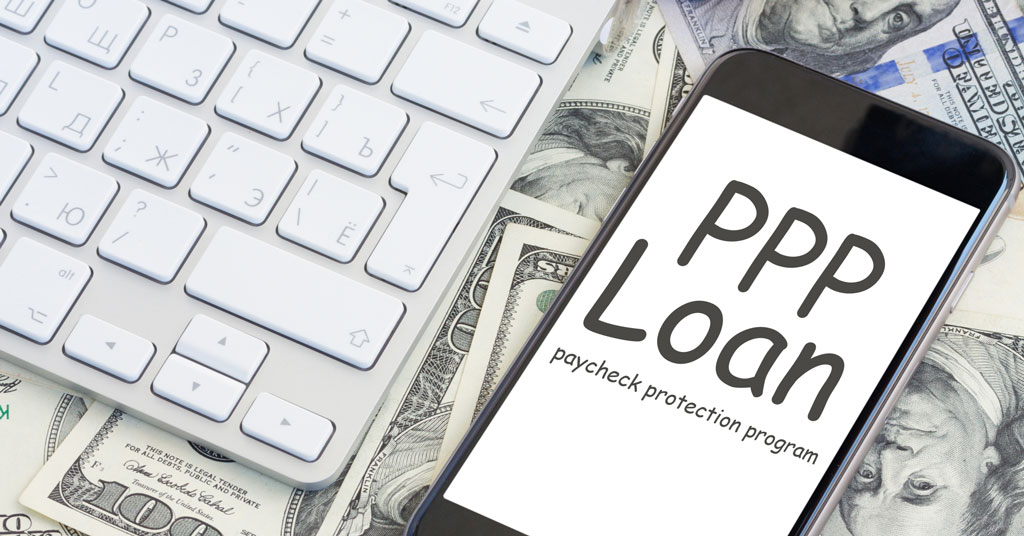PPP Flexibility Act Gives Borrowers More Time and Flexibility To Spend PPP Funds

On June 5, 2020, the Paycheck Protection Program Flexibility Act of 2020 (Flexibility Act) was signed into law. The Flexibility Act provides small businesses with more time and flexibility to spend federal funds obtained through the Paycheck Protection Program (PPP). The PPP is a federal stimulus program under the Coronavirus Aid, Relief, and Economic Security Act (CARES Act), enacted March 27, 2020, that addresses the economic impact of Covid-19 on small businesses.
Overview of the PPP
The CARES Act allocates a significant amount of federal funds through the PPP to cover payroll and overhead expenses for small businesses. When the CARES Act was enacted, the Small Business Administration (SBA) guaranteed $349 billion in PPP loans for small businesses of not more than 500 employees (with some exceptions) to maintain their payroll during the pandemic. These loans have very favorable terms, including loan forgiveness for payroll and overhead expenses, payment deferral, no collateral, no personal guarantees, no borrower or lender fees payable to the SBA, and 100% guarantee by the SBA. Small businesses may borrow up to $10 million, with interest not to exceed 0.5%. These features make the PPP akin to an emergency grant program for small businesses to fund their payroll during the pandemic.
After overwhelming demand from businesses applying for loans through the PPP since the program’s April 3, 2020 launch, the PPP ran out of funds. As a result, the Paycheck Protection Program Increase Act of 2020 was enacted on April 24, 2020. This act added an additional $310 billion to fund the PPP, and set aside $60 billion for community-based and smaller lenders to assist smaller businesses that were unable to access PPP funds during the first round of loans. The Flexibility Act made PPP loan terms more useful for borrowers by, among other changes, increasing the length of time for borrowers to spend PPP funds and increasing payment deferral and loan maturity.
Extension of loan forgiveness, loan deferral, and loan maturity
Before enactment of the Flexibility Act, small businesses had to use their PPP funds within 8 weeks of disbursement (the “covered period”) in order for that money to be eligible for loan forgiveness. The Flexibility Act extends the covered period from 8 weeks to 24 weeks from disbursement, not to extend past December 31, 2020. With this change, borrowers do not have to rush to use their PPP loan money after it is disbursed, especially while most businesses are just now starting to reopen. The extension of the covered period gives borrowers the flexibility to use the funds as they need them to reopen and ramp up business.
The Flexibility Act also pushes back deferral of PPP loan repayment. Before the Flexibility Act, borrowers were required to begin paying back loans that did not qualify for forgiveness 6 months from the date of loan disbursement. Under the Flexibility Act, borrowers now have until 10 months after the last day of the covered period (i.e., 24 weeks from loan disbursement) before the borrower must begin paying back loans that do not qualify for forgiveness.
In addition, borrowers were required to pay back loans that did not qualify for forgiveness within 2 years. Under the Flexibility Act, PPP loans originated on or after the date of enactment (i.e., June 5, 2020) mature after 5 years. For borrowers with loans originated before June 5, 2020, the Flexibility Act provides that borrowers and lenders may mutually agree to modify the maturity of the loan balance from 2 years to 5 years.
Allocation of funds toward payroll/nonpayroll expenses
Under the original PPP, borrowers were required to use at least 75% of their loans on payroll expenses to be eligible for loan forgiveness. The Flexibility Act reduced this threshold to 60%. Now, borrowers may spend up to 40% on nonpayroll expenses such as rent, mortgage, or utility obligations. While an original goal of the PPP was to provide borrowers with means to keep workers employed, many employees have been unable to work during the pandemic because of their employers’ closures, compliance with government orders, and/or reduced capacity. Allowing borrowers to spend more of their PPP loans on nonpayroll expenses gives them the flexibility to allocate capital to nonpayroll expenses to keep their businesses afloat, rather than paying salaries for employees unable to work. The change in allocation of funds eases the requirements for small businesses that have encountered difficulties in rehiring or keeping employees to obtain loan forgiveness.
At the time the Flexibility Act was enacted, there was an open issue of whether 60% was a cliff or a prorated percentage. In other words, if a borrower spent only 59% of the PPP loan on payroll expenses, would the entire loan be ineligible for loan forgiveness? On June 10, 2020, a revised interim final rule clarified that if borrowers spend less than 60% on payroll costs, they will still be eligible for prorated loan forgiveness. The regulations provide the following example of how prorated loan forgiveness will be calculated:
“...if a borrower receives a $100,000 PPP loan, and during the covered period the borrower spends $54,000 (or 54 percent) of its loan on payroll costs, then because the borrower used less than 60 percent of its loan on payroll costs, the maximum amount of loan forgiveness the borrower may receive is $90,000 (with $54,000 in payroll costs constituting 60 percent of the forgiveness amount and $36,000 in nonpayroll costs constituting 40 percent of the forgiveness amount).”
Payroll tax deferral
The Flexibility Act extends deferral of payment of payroll taxes from the date of loan forgiveness under the original PPP until December 31, 2020.
Safe harbor
To qualify for loan forgiveness for employees’ salaries under the PPP, borrowers must restore reductions in the number of full-time equivalent (FTE) employees by December 31, 2020. Under the original PPP, borrowers had until June 30, 2020 to restore the number of FTE employees. The PPP provides “safe harbors” from a proportionate reduction in loan forgiveness for borrowers who are unable to restore reductions in the amount of FTE employees by December 31, 2020. Under the Flexibility Act, loan forgiveness for employee salaries will not be reduced if, in good faith, the borrower can demonstrate either:
1) inability to rehire former employees and inability to hire similarly qualified employees for unfilled positions by December 31, 2020; or
2) inability to return to the same level of pre-Covid-19 business activity because of the borrower’s compliance with federal requirements related to health, safety, and sanitation.
Conclusion
The Flexibility Act provides borrowers with better loan terms, more flexibility, and more time to use PPP funds. The changes to the PPP also make it easier for borrowers to qualify for loan forgiveness. Overall, the Flexibility Act is a positive development for borrowers who have secured PPP loans, and for borrowers who have yet to apply for PPP loans.
Jan Gilbert is a Shareholder with Polsinelli and Emily Doan is an Associate with the firm. Both focus on the firm’s Global Franchise and Supply Network. Contact him at 202-777-8918 or [email protected]. Contact her at 303-256-2702 or [email protected].
Share this Feature
Recommended Reading:
| ADVERTISE | SPONSORED CONTENT |
FRANCHISE TOPICS
- Multi-Unit Franchising
- Get Started in Franchising
- Franchise Growth
- Franchise Operations
- Open New Units
- Franchise Leadership
- Franchise Marketing
- Technology
- Franchise Law
- Franchise Awards
- Franchise Rankings
- Franchise Trends
- Franchise Development
- Featured Franchise Stories
| ADVERTISE | SPONSORED CONTENT |

$550,000
$250,000





 The multi-unit franchise opportunities listed above are not related to or endorsed by Multi-Unit Franchisee or Franchise Update Media Group. We are not engaged in, supporting, or endorsing any specific franchise, business opportunity, company or individual. No statement in this site is to be construed as a recommendation. We encourage prospective franchise buyers to perform extensive due diligence when considering a franchise opportunity.
The multi-unit franchise opportunities listed above are not related to or endorsed by Multi-Unit Franchisee or Franchise Update Media Group. We are not engaged in, supporting, or endorsing any specific franchise, business opportunity, company or individual. No statement in this site is to be construed as a recommendation. We encourage prospective franchise buyers to perform extensive due diligence when considering a franchise opportunity.